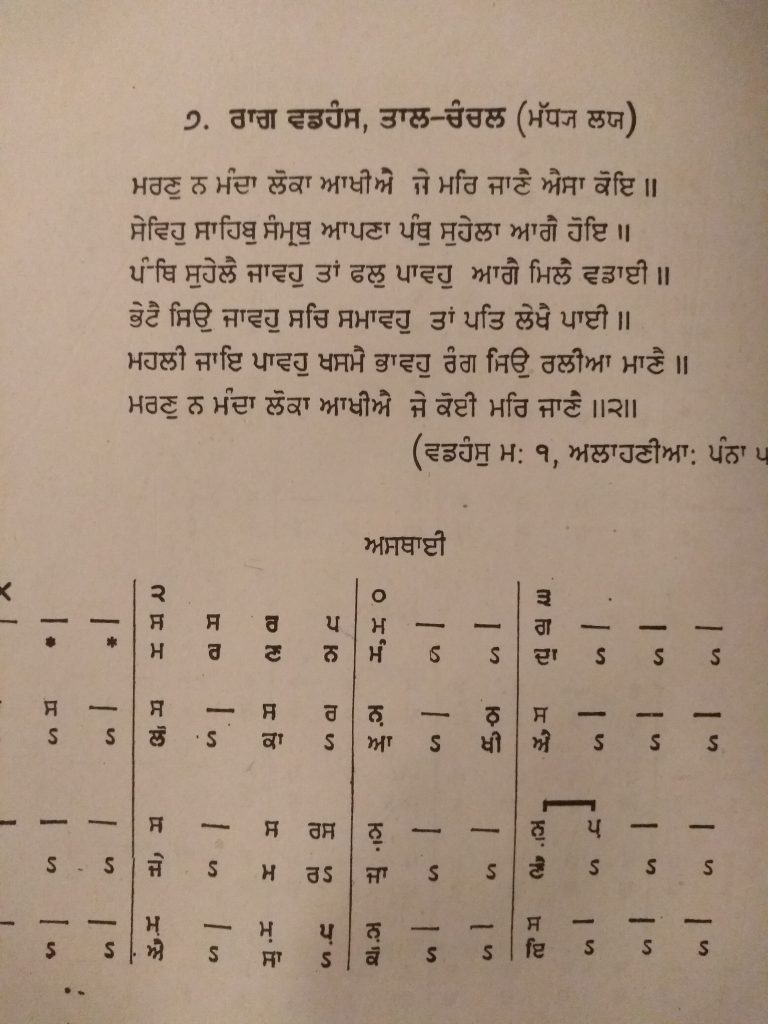Audio
Shabad
mrxu n mMdw lokw AwKIAY jy mir jwxY AYsw koie ]
syivhu swihbu sMmRQu Awpxw pMQu suhylw AwgY hoie ]
pMiQ suhylY jwvhu qW Plu pwvhu AwgY imlY vfweI ]
BytY isau jwvhu sic smwvhu qW piq lyKY pweI ]
mhlI jwie pwvhu KsmY Bwvhu rMg isau rlIAw mwxY ]
mrxu n mMdw lokw AwKIAY jy koeI mir jwxY ]2]
Let people not say that death is bad, if somebody truly knows how to die.
Serve your Lord and Master and the path ahead [in the next realm] will be easy.
Go on that easy path and obtain its fruit; ahead [in the next realm] you shall obtain greatness.
Go with total sacrifice and merge into the Truth; then you shall obtain honour in your destiny.
You shall obtain the abode [of Truth] and please your husband Lord; you shall lovingly be united with him.
Let people not say that death is bad, if somebody truly knows how to die.
Notes
The Alahnian are traditional songs that were sung at the time of a funeral in Punjabi culture. Guru Nanak composed his own collection of Alahnian, in rag Vadhans, in which the theme of death is taken up. This is one example demonstrating how the subject of death might be interpreted in different ways – it can refer to both the physical death as well as the death of the ego.
The tune for this composition is notated by Principal Dyal Singh in his four-volume work on Gurmat Sangit. He explicitly states that this was an traditional tune sung by the old ragis. Interestingly, the word Vad-hans means ‘Great Swan’, where the swan represents the supreme soul which lives in this world (lake) and yet effortlessly floats on top of it, unaffected by the temptations of Maya. So, the theme of many shabads in rag Vadhans relates to the state of such a supreme soul, using the allegories of death and marriage, both of which are celebrated for representing union with the divine.

Musically speaking, Rag Vadhans was a particularly popular rag in the Punjab region, being used in many local ‘folk’ genres. It shares several features that closely resemble the rags Des, Tilak Kamod, and Sarang, especially the S R M P N S ascending movement which is common to all of these rags. Vadhans is sung more in the lower – purvang – end of the scale, however, where it is similar yet distinct to Tilak Kamod. In the higher end of the scale – utarang – it has more in common with Sarang and in the middle octave it incorporates phrases that resemble Des. All in all, these similarities make it a somewhat tricky rag to navigate without wondering into the territory of neighbouring rags.
